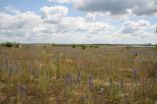New tool in the early detection of bowel disease
2010-12-07
(Press-News.org) An international team of researchers led by the University of East Anglia (UEA) have developed a new kind of endoscope to aid the early detection and diagnosis of inflammatory bowel disease.
The Confocal Laser Endomicroscope (CLE) contains a powerful microscope which allows clinicians to view the bacteria that are thought to trigger diseases of the bowel such as Crohn's disease and ulcerative colitis.
"Bacteria within the wall of the gut are already believed to play an important role in the development of inflammatory bowel disease and we now have a powerful new tool for viewing this bacteria during routine colonoscopy," said Prof Alastair Watson of the University of East Anglia (UEA), who led the work in partnership with researchers in France and Germany.
"This new technique will allow the rapid identification of patients at risk or in the early stages of this common but distressing group of diseases."
The causes of Crohn's disease and ulcerative colitis are still not completely understood but bacteria within the mucous membrane of the gut are thought to play a role. The current method of taking biopsies prevents observation of the bacteria's exact location and of the way it interacts with the mucous membrane. The new endomicroscopy technique, which uses a flourescent dye to highlight the bacteria, allows these exact processes to be viewed at a sub-cellular level during routine colonoscopy.
Funded by the Wellcome Trust, the study also found that of 163 patients studied, those with Crohn's disease or ulcerative colitis were much more likely to have bacteria within the wall of their gut than those with healthy intestines.
INFORMATION:
'Confocal laser endomicroscopy is a new imaging modality for recognition of intramucosal bacteria in inflammatory bowel disease in vivo' by D Moussata (Claude Bernard University, France), M Goetz (Johannes Gutenberg University, Germany), A Goeckner (Johannes Gutenberg University), M Kerner (Johannes Gutenberg University), B Campbell (University of Liverpool), A Hoffman (Johannes Gutenberg University), S Biesterfeld (Johannes Gutenberg University), B Flourie (Claude Bernard University), J-C Saurin (Claude Bernard University), P Galle (Johannes Gutenberg University), M Neurath (Johannes Gutenberg University), A Watson (University of East Anglia), R Kiesslich (Johannes Gutenberg University) is published online by Gut: http://gut.bmj.com/content/early/2010/10/26/gut.2010.213264.full
END
ELSE PRESS RELEASES FROM THIS DATE:
2010-12-07
Quebec City, December 6, 2010—Researchers at Université Laval, in collaboration with Nova Scotia Agricultural College, have discovered what causes Christmas tree needles to drop off, and how to double the lifespan of Christmas trees in homes. The authors presented their findings in a recent issue of the scientific journal Trees.
The researchers have identified a plant hormone—ethylene—responsible for needle loss in balsam fir. They made the discovery by placing fir branches in containers of water inside a growth chamber. After ten days the branches began to produce ethylene ...
2010-12-07
Brand named hotels fare better than independently operated properties in economic downturns, according to a team of international researchers.
A study of the performance of hotels during both economic recessions and expansions indicates that brand named hotels are more profitable than independent hotels under all economic conditions, but the difference is particularly significant during recessions, said John O'Neill, associate professor of hospitality management, Penn State.
"There has been a lot of debate in the hotel industry about the advantages of brand affiliation ...
2010-12-07
CHAMPAIGN, Ill. — Good news for control freaks! New research confirms that having some authority over how one takes in new information significantly enhances one's ability to remember it. The study, in the journal Nature Neuroscience, also offers a first look at the network of brain structures that contribute to this phenomenon.
"Having active control over a learning situation is very powerful and we're beginning to understand why," said University of Illinois psychology and Beckman Institute professor Neal Cohen, who led the study with postdoctoral researcher Joel Voss. ...
2010-12-07
COLLEGE STATION — A team of Texas AgriLife Research engineers has developed a way to cut by as much as half the amount of irradiation needed to kill 99.999 percent of salmonella, E. coli and other pathogens on fresh produce.
By packing produce in a Mylar bag filled with pure oxygen, Dr. Carmen Gomes, AgriLife Research food safety engineer, and her colleagues found they could significantly reduce the amount of radiation needed to kill those pathogens. Reducing the amount of radiation is not so much a safety measure as it is a way to preserve quality of the produce, she ...
2010-12-07
PITTSBURGH—Computer-related technology is increasingly driving the U.S. economy, yet computer science education is scant in most American elementary and secondary school classrooms and the number of introductory and Advanced Placement courses in computer science has actually declined in the last five years, according to a report released this fall.
"Some states and some schools are offering some really excellent courses," said Mark Stehlik, co-author of the report, "Running on Empty: The Failure to Teach K-12 Computer Science in the Digital Age," http://www.acm.org/runningonempty/. ...
2010-12-07
How do ecosystems develop? No one really knows, yet. There is however one project, unique in the world, seeking to answer this question. In a former open-pit coal mining area in Brandenburg, Germany, a surface of six hectares was partitioned off and then left to its own resources. Scientists from the Technische Universitaet Muenchen (TUM), in collaboration with researchers from other institutions, are studying the development of soil, flora, and fauna there. With this research they aim to establish the factors that have a particularly strong influence on developing ecosystems.
Young ...
2010-12-07
CHICAGO --- Post-traumatic stress syndrome – when a severely stressful event triggers exaggerated and chronic fear – affects nearly 8 million people in the United States and is hard to treat. In a preclinical study, Northwestern Medicine scientists have for the first time identified the molecular cause of the debilitating condition and prevented it from occurring by injecting calming drugs into the brain within five hours of a traumatic event.
Northwestern researchers discovered the brain becomes overly stimulated after a traumatic event causes an ongoing, frenzied ...
2010-12-07
New research at Rice University could ultimately show scientists the way to make batches of nanotubes of a single type.
A paper in the online journal Physical Review Letters unveils an elegant formula by Rice University physicist Boris Yakobson and his colleagues that defines the energy of a piece of graphene cut at any angle.
Yakobson, a professor in mechanical engineering and materials science and of chemistry, said this alone is significant because the way graphene handles energy depends upon the angle -- or chirality -- of its edge, and solving that process for ...
2010-12-07
Investigators report no evidence of toxicity in the four hemophilia B patients enrolled to date in a gene therapy trial using a vector under development at St. Jude Children's Research Hospital and UCL (University College London) to correct the inherited bleeding disorder.
This trial was designed primarily as a safety test, with low and intermediate doses of the vector expected to produce little detectable Factor IX. The Factor IX protein helps the blood form clots. Individual with hemophilia B lack adequate levels of this clotting factor. The first participant in the ...
2010-12-07
People with psychotic disorders, such as schizophrenia or bipolar disorder, are 12 times more likely to commit suicide than average, according to research released today by King's Health Partners.
The research found that the rate of suicide was highest in the first year following diagnosis (12 times national average) and that high risk persisted – remaining four times greater than the general population ten years after diagnosis, a time when there may be less intense clinical monitoring of risk.
Neither the risk of suicide nor the long-term risk of suicide, as compared ...
LAST 30 PRESS RELEASES:
[Press-News.org] New tool in the early detection of bowel disease


